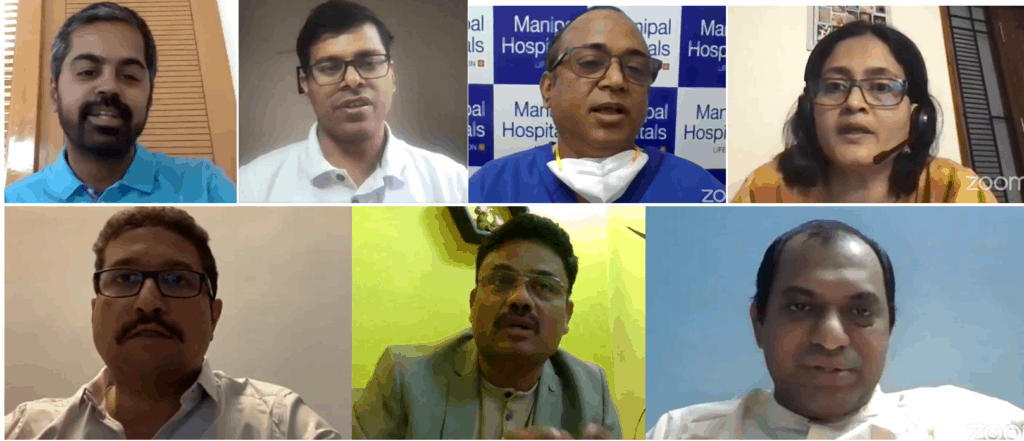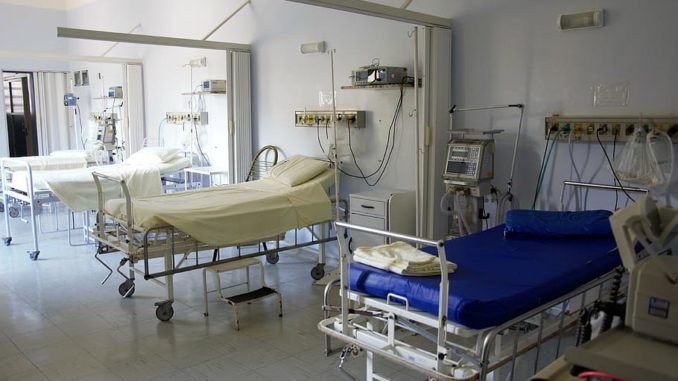The second wave of the COVID-19 pandemic is devastating India with a huge chunk of the population testing positive for the virus, exacerbating the challenges of an inadequate and already-burdened healthcare system. Lack of sufficient healthcare equipment such as oxygen concentrators, ICUs and ventilators have left hundreds of serious patients scrounging for beds and medicines.
In the light of the ongoing crisis, the apartment management software platform ADDA in collaboration with Citizen Matters, organised a webinar on the topic ‘COVID Management in Residential Communities’.

The key takeaways
- Residential community COVID management: Essential to have volunteer teams to handle patient needs (food, oxygen cylinders/ concentrators or help with finding a bed). Extra flats or Party Halls can be used as temporary isolation centres with sanitation potential and clinical partnerships to provide remote advice.
Societies should propagate regular testing and screening among members as part of residential community COVID management. - Vaccination camp in residential communities: Needs an AC facility with space for Waiting area / Registration desk, Inoculation area and Observation area (to observe any post-jab adverse effects)
- To address concerns of poor building design and transmission through air ducts, there are simple solutions. If there are common ducts, consider an air purifier. Ensure there is cross ventilation. It’s not a bad idea to wear a mask at home too if it is poorly ventilated.
- Masks: N95 can be used for about 6-8 hours at a stretch. To minimise adding waste to landfills, one can use 6 masks and use them on rotation (virus if any will deactivate if masks are left aside for some days). When double masking, use N95 inside and other masks outside the N95 covering it. You can also use two cloth masks which should be washed immediately after use.
Drawing upon his experience during this wave, Dr. Satyanarayana Mysore, HOD and consultant — pulmonology, lung transplant physician, Manipal Hospitals, observed several differences in manifestation. “We saw very young patients needing oxygen within 48 hours of testing. Home isolation is not as often possible in the second wave for many patients, due to the Variants of Concern which might cause changes in the clinical behaviour of the illness.”
The severity of the second wave calls for creating more infrastructural facilities, strengthening grassroots response and triaging at the community level through a panel of doctors who can assess the needs of those reaching out at this level.
Covid Care Centres in apartments
Considering the intensity of the wave and the rise in caseload, Prestige Ferns Residency, an apartment complex in Bengaluru, has tied up with Manipal Hospitals to set up COVID Care Centres (CCCs) with basic oxygen support. With 1,500 apartment units, the COVID Care Centre at the apartment has two emergency beds with oxygen support, concentrators and cylinders. The stop-gap arrangement will help residents until they get admitted to a hospital if they are severe or until recovery if the symptoms are mild.
Bangalore Apartments Federation (BAF), a federation of Apartment Owners’ Associations (AOA) and Residents’ Welfare Associations (RWA) in Bengaluru, is coordinating with the city municipal body, Bruhat Bengaluru Mahanagara Palike (BBMP) by dividing apartments into small, medium and large categories and planning COVID facilities accordingly.
“The healthcare system has always been broken but it’s broken even for the rich now. A lot of times those who need basic support can get it at these centres in apartments and some degree of support. BBMP is also giving a broad construct on what you need to set up such centres although it may be applicable to large apartments. We can try a hub and spoke model at a cluster level with this approach,” said Vikram Rai, general secretary of Bangalore Apartment Federation.
In a sense, the COVID-19 pandemic is rebalancing the role of society, government and business. “We have to elevate our governance models and must learn to work together and draw a line in a contested area like Residents Welfare Associations (RWAs). Apartments can come together to create more common (infrastructure) by pooling their resources. Putting down common protocols and evolving from there, mapping resources and knowledge transfer will be crucial. This would be the way forward to contain the pandemic,” said Sridhar Pabishetty, Founding Director, Kautilya School of Public Space.
Healthcare practitioners state that the hub and spoke model should outlive the pandemic as it will be useful to give timely treatment anytime, whenever there is an emergency.
Read more: How to organise a COVID vaccination drive in your apartment
Creating infrastructure
The community-level triaging model, however, will not be feasible without human infrastructure, which is already stretched beyond limits.
“Physical infrastructure is easier to create than finding skilled medical staff. The hospital has reached out to retired nurses, off-duty nurses and nursing college staff who have come forward to help them in apartments as doctors are in short supply. If everything falls in place, we can look at this as a model for healthcare in the coming years,” said Karthik Rajagopal, Chief Operating Officer, Manipal Hospitals.
The requisite number of nurses and doctors should be pressed into service for this model to be sustained. As the healthcare providers are scarce, paramedics like nurses can be stationed on the premises whereas doctors can stand connected virtually and could make visits based on the need.
Karthik also indicates concerns over the scalability of this model for which more hospitals need to step in, and aid housing complexes in setting up infrastructure facilities. “If that happens, apartments can become a bridge between patients and hospitals. Right now, we are at close to 5-6 apartment complexes,” explained Karthik.
The number of beds at care centres in apartments depends on the severity of the pandemic too. Karthik adds that around 1-2 beds per 200 apartments would be sufficient but when the situation goes out of control, we need to plan based on the situation and where the hotspots are.
“Oxygen concentrators should be looked at as a stop gap arrangement. Having the facility at the care centres in apartments can help in providing early intervention as and when a patient’s oxygen saturation drops,” he adds.
Roughly, it would cost Rs 325,000 to set up basic infrastructure and the recurring cost would be the cost of manpower.
When does one start looking for a bed?
Cough attacks or bouts of cough while taking a deep breath is an important symptom, that is when the oxygen levels can fall. This should be a wake-up call for patients. “If the saturation is on the lower side and symptoms are more, it is time to look for a bed. There is a degree of unpredictability to this, which must be kept in mind,” says Dr Satyanarayana.
Downscaling for smaller and mid-sized apartments
While larger apartments can easily put this into action, how can this be done at a neighbourhood level consisting of smaller apartments? “There is space, infrastructure, bandwidth and know-how that needs to come together for implementing the strategy. This can happen in large apartments, but not small and medium. Here is where federations like BAF can step in,” explained Vikram Rai, general secretary of the Bangalore Apartment Federation.
At present, BAF is collecting data on the needs and availability based on these parameters to look at an aggregate view, to identify and tag apartments and foster partnerships such as that with Manipal Hospitals.
“We are also looking at what we can do with other institutions such as schools and MNCs. Groups like BAF can reach out to other institutions to find out how we can create common infrastructure,” said Vikram.
Read more: When and how to find a COVID bed in Bengaluru?
Developing a volunteer base
Prestige Ferns Residency also has an in-house volunteering team that looks at the requirements and meeting the needs for essentials such as food, oxygen cylinders/concentrators, or help with finding a bed.
“While there is no fixed solution, we are following this modus operandi on a trial and error basis. Last year the most number of infections we had was 25, at its peak. This year we are consistently seeing 30+ cases, and even 50 cases at one point, and we were made a containment zone,” added Anish Nema, EC member, Prestige Ferns Residency.
Read more: Corona Kavach, Corona Rakshak: What these and other insurance policies cover
Lessons from Mumbai
Prevention and precaution has made a huge difference in handling COVID in Maharashtra Societies Welfare Association (MAHASEWA).
This time, young people and children are getting infected by the virus which calls for monitoring children and others who display a great degree of mobility. “Regular testing is necessary for those who interact with a large number of people and regular visitors (maids and labourers) must be screened. Testing and precautions are helping the large apartments in Mumbai deal with the pandemic,” stated Mangesh Ranawade, chairman, MAHASEWA and chairman, Kharghar Taloja Welfare Association (KTCWA).
